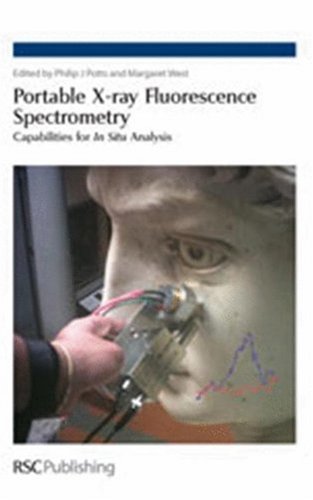

Most ebook files are in PDF format, so you can easily read them using various software such as Foxit Reader or directly on the Google Chrome browser.
Some ebook files are released by publishers in other formats such as .awz, .mobi, .epub, .fb2, etc. You may need to install specific software to read these formats on mobile/PC, such as Calibre.
Please read the tutorial at this link. https://ebooknice.com/page/post?id=faq
We offer FREE conversion to the popular formats you request; however, this may take some time. Therefore, right after payment, please email us, and we will try to provide the service as quickly as possible.
For some exceptional file formats or broken links (if any), please refrain from opening any disputes. Instead, email us first, and we will try to assist within a maximum of 6 hours.
EbookNice Team

Status:
Available4.5
25 reviewsPortable X-ray fluorescence (PXRF) instrumentation has some unique analytical capabilities for the in situ analysis of samples in the field. These capabilities have been extended in recent years by the continuing development of solid state detectors, surface mounted electronics, digital signal processing technology, Li-ion batteries combined with a choice of rugged sealed radioisotope sources or miniature X-ray tubes that provide lightweight hand-held devices.
As well as opening up new applications, in situ measurements by PXRF, where the instrument is placed in direct contact with the object to be analysed, involve the complete integration of sampling and analysis. Careful interpretation of results is therefore required, particularly when the analysis is used to estimate the bulk composition of a sample.
In this monograph, an overview is given of instrumentation, analytical capabilities, and limitations in the interpretation of results, sampling considerations and applications where PXRF offers substantial advantages over conventional analytical techniques. The aim is to give the reader an insight into the capabilities of the technique and to demonstrate the contribution it can make to a range of areas of contemporary scientific interest.
Chapters are written by internationally recognised scientists with practical experience of in situ analysis using portable X-ray fluorescence and demonstrates the wide range of applications for the technique. The topics covered are illustrated with diagrams and photographs where appropriate and each chapter includes supporting references to enable the reader to gain a greater understanding of a particular application.
Topics include: -analytical capabilities -instrumentation -quantification -correction procedures -sampling considerations -future developments.
Applications include: -the assessment of contaminated land -surfaces -coatings and paints -workplace monitoring -metal & alloy sorting -geochemical prospecting -archaeological investigations -museum samples & works of art -extraterrestrial analysis.